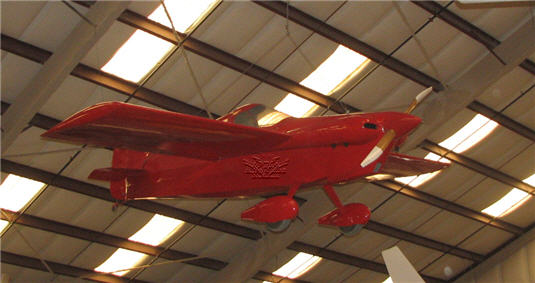CASSUTT PYLON RACER
Formula One pylon racing began in 1947 when the Goodyear Tire and Rubber Company sponsored the event at the National Air Races. The sport quickly became a favorite of the fans because the two-mile rectangular closed course brought the action right in front of the spectators with the planes racing at 50 feet off the ground, often wing tip to wing tip. Planes were restricted by wing size, weight, and engine displacement so that all were evenly matched. Aircraft design was very important and most planes were designed and constructed by individuals. Tom Cassutt, a pilot for Trans World Airlines, designed and built his racer in 1958. He quickly issued plans for it hoping that more people would build racers to expand the competition. Few Cassutt racers have been built exactly according to the plans; most incorporate some changes desired by the person building the plane. However, Cassutt based planes have been quite popular and successful in Formula One racing and more than 800 have been built.
Specifications
- Wingspan: 14 ft 11 in
- Length: 16 ft 6 in
- Height: 4 ft 3 in
- Weight: 730 lbs (loaded)
- Max. Speed: 230 mph
- Engines: 1 Continental C-85-8F 4 cylinder engine, 115 horsepower
- Crew: 1
